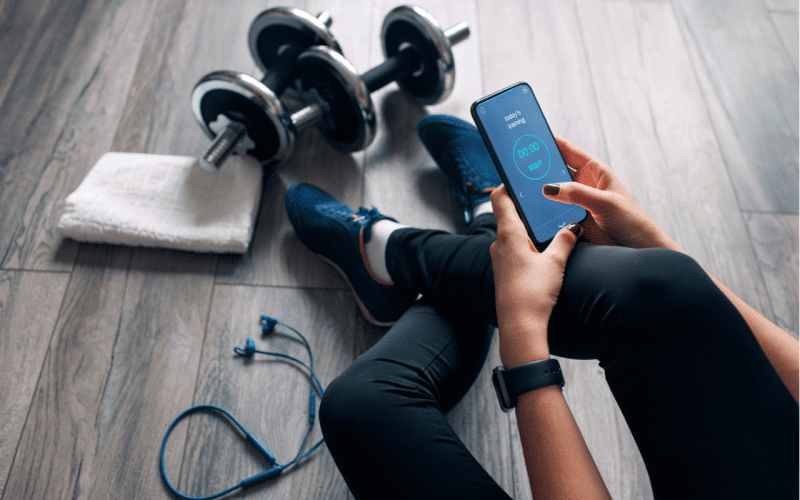The digital revolution has left no stone unturned, and the fitness industry is no exception. Fitness apps have emerged as a transformative force, reshaping how we approach exercise, wellness, and overall health. These applications offer a plethora of features that make fitness more accessible, personalized, and engaging than ever before. This article delves into the myriad ways fitness apps are changing the way we exercise, covering their benefits, functionalities, and future potential.
The Rise of Fitness Apps
The advent of smartphones has catalyzed the development of fitness apps, which have become increasingly popular over the past decade. According to a report by Statista, the global fitness app market is expected to reach $14.64 billion by 2027, growing at a compound annual growth rate (CAGR) of 21.4% from 2020. This growth is fueled by the increasing awareness of health and wellness, coupled with the convenience that these apps offer.
Accessibility and Convenience
One of the most significant advantages of fitness apps is their accessibility. Gone are the days when one had to rely solely on gym memberships or personal trainers. Fitness apps provide a wealth of resources right at your fingertips, allowing users to work out anytime, anywhere. Whether you’re at home, in a hotel room, or at a park, these apps offer the flexibility to maintain a consistent workout routine.
Moreover, fitness apps cater to all fitness levels, from beginners to advanced athletes. They offer a wide range of exercises, including cardio, strength training, yoga, and even specialized workouts like HIIT (High-Intensity Interval Training). This variety ensures that users can find something that suits their preferences and fitness goals.

Personalized Workout Plans
One of the standout features of fitness apps is their ability to offer personalized workout plans. Utilizing algorithms and user data, these apps can create customized routines based on individual goals, fitness levels, and preferences. For instance, apps like MyFitnessPal and Fitbit not only track your activity but also provide tailored recommendations to help you achieve your fitness objectives.
Personalization extends beyond just workout plans. Many fitness apps also offer personalized nutrition advice, sleep tracking, and even mental wellness features like meditation and stress management. This holistic approach ensures that users can take a comprehensive approach to their health and wellness.
Motivation and Accountability
Staying motivated is one of the biggest challenges in maintaining a regular exercise routine. Fitness apps tackle this issue head-on by incorporating various motivational features. From daily reminders and progress tracking to social sharing and community support, these apps provide multiple avenues to keep users engaged.
Gamification is another powerful tool used by fitness apps to enhance motivation. By turning workouts into a game, complete with rewards, challenges, and leaderboards, apps like Strava and Zombies, Run! make exercising more enjoyable and competitive. This gamified approach not only makes workouts fun but also fosters a sense of accomplishment and progress.
Real-Time Feedback and Analytics
Fitness apps leverage advanced technologies like artificial intelligence (AI) and machine learning to provide real-time feedback and analytics. For example, apps like Freeletics and Nike Training Club use AI to analyze your form and technique, offering instant corrections to help you avoid injuries and improve performance.
Moreover, these apps provide detailed analytics on various metrics such as calories burned, distance covered, and heart rate. This data-driven approach allows users to track their progress over time and make informed decisions about their fitness routines. The ability to visualize progress through graphs and charts can be incredibly motivating, providing a tangible sense of achievement.

Social Connectivity
The social aspect of fitness apps cannot be overstated. Many apps offer features that allow users to connect with friends, join fitness communities, and participate in group challenges. This social connectivity fosters a sense of community and support, which can be incredibly motivating.
Apps like Strava and Peloton have built entire communities around their platforms, allowing users to share their workouts, celebrate achievements, and even compete with one another. This social interaction adds an extra layer of accountability and motivation, making it easier to stick to a fitness routine.
Integration with Wearable Technology
The integration of fitness apps with wearable technology has further enhanced their functionality and appeal. Devices like smartwatches and fitness trackers can sync with apps to provide real-time data on various health metrics. This seamless integration allows for more accurate tracking and personalized recommendations.
For instance, Apple Health and Google Fit can integrate with a wide range of third-party apps and devices, offering a centralized platform to monitor all aspects of your health. This interconnected ecosystem ensures that users have a comprehensive view of their fitness and wellness data, making it easier to set and achieve goals.
The Future of Fitness Apps
As technology continues to evolve, so too will fitness apps. The future holds exciting possibilities, from more advanced AI-driven personalization to augmented reality (AR) workouts. Imagine a fitness app that uses AR to create a virtual personal trainer who guides you through your exercises in real-time. Such innovations could make workouts even more engaging and effective.
Moreover, the integration of biometric data and genetic information could lead to hyper-personalized fitness plans tailored to an individual’s unique physiology. This level of customization could revolutionize the way we approach fitness, making it more effective and enjoyable.
Conclusion
Fitness apps have undeniably changed the way we exercise, offering unprecedented levels of accessibility, personalization, and motivation. They have democratized fitness, making it easier for people of all fitness levels to pursue their health and wellness goals. As technology continues to advance, the potential for these apps to further transform the fitness landscape is immense. Whether you’re a fitness enthusiast or a beginner looking to get started, there’s a fitness app out there that can help you achieve your goals and lead a healthier, more active life.












